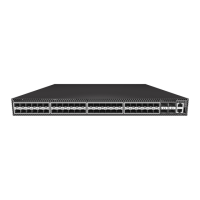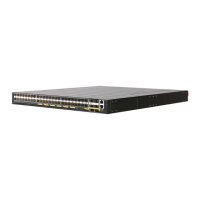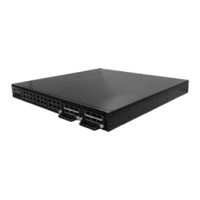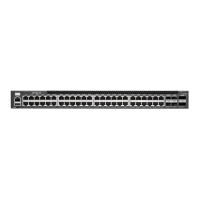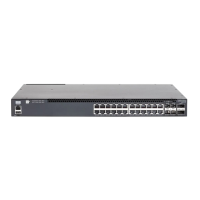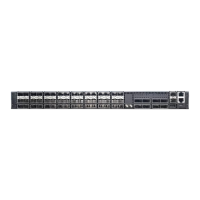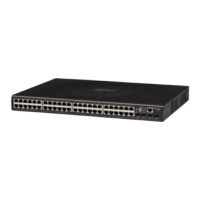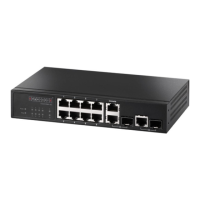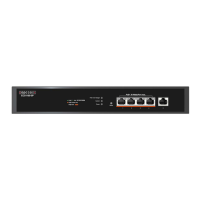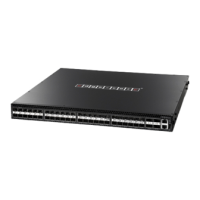Chapter 11
| Link Aggregation Commands
MLAG Commands
– 406 –
interface
ethernet unit/port
unit - Unit identifier. (Range: 1)
port - Port number. (Range: 1-32/54)
port-channel channel-id (Range: 1-16/27)
Command Mode
Global Configuration
Command Usage
◆ An MLAG domain can have two and only two MLAG devices. (See Figure 1.)
◆ An MLAG domain may have many MLAGs.
◆ An MLAG can belong to one and only one MLAG domain.
◆ The associated MLAG domain may be nonexistent, which causes the MLAG to
be inactive locally.
◆ There can be one and only one MLAG member for each MLAG on an MLAG
device.
◆ The MLAG member can be a normal port or a static trunk.
◆ An MLAG member is active if the MLAG ID is set and the associated MLAG
domain is active.
◆ An MLAG member is active if the MLAG ID is set and the associated MLAG
domain is active.
◆ An MLAG is formed when the peer MLAG members are both active.
◆ The following items apply when an MLAG is formed.
■
When an MLAG member is operationally up and the MLAG peer member is
not operationally down, all traffic from the peer link can not be forwarded
to the MLAG member.
■
When an MLAG member is operationally up and the MLAG peer member is
operationally down, all traffic from the peer link can be forwarded to the
MLAG member.
■
When an MLAG member is operationally up, all updates for learned MAC
addresses on the MLAG peer member will be synced to the MLAG member
automatically.

